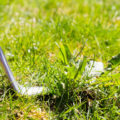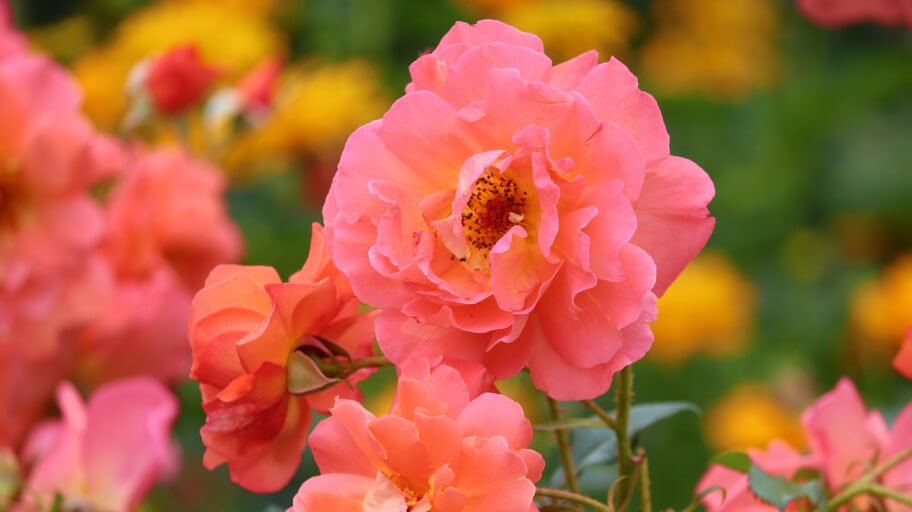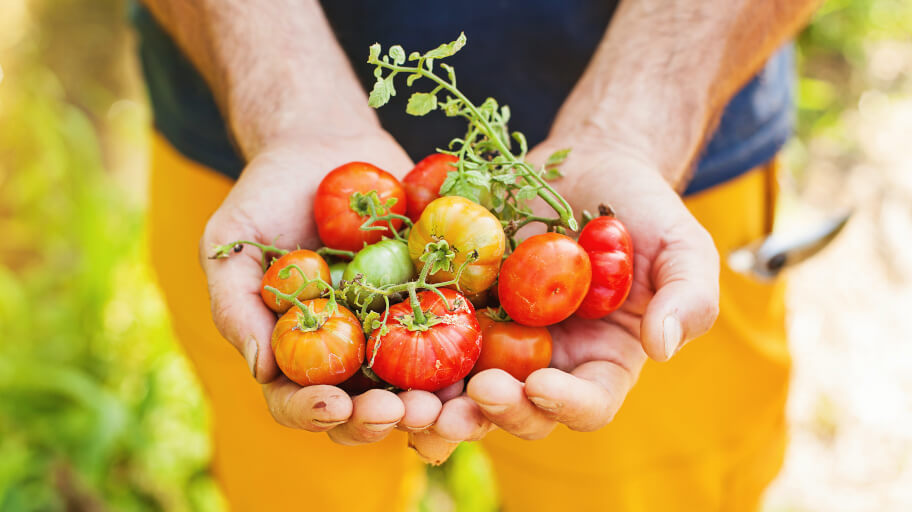
We all love herbs. They can be used to improve our health, cooking and seasoning meals, making exquisite scents and much more. Knowing how to grow your own herbs from seeds is the perfect way to produce your own green seasoning.
How to collect and store herb seeds
Storing and collecting seeds has been a tradition ever since people discovered agriculture. Harvesting your own herb seeds, allows you to have ecologic, pesticide-free herb seeds.
Even experienced gardeners can struggle with collecting and storing their seeds, especially when it comes to herb seeds. So, here’s how you can harvest and store your herb seeds.
Collecting/harvesting
Seeds ripen differently for different plants. Some herb seeds tend to ripen really fast while others take their time. It’s important to research before planting, as some
The first giveaway sign of ripe seeds is their colour, as seeds turn brown when they’re ripe. The ideal time to harvest them is when they are completely dry.
You can harvest seeds by cutting close to the seed head and putting them in a paper bag. After that, spread them on some paper and let them dry completely before putting them in the bag. Store your seeds in a paper bag until you separate them from their stems and all the other parts.
Some seeds should be harvested before they’re fully dried. They can shatter, which happens when they’re fully dried. However, the seeds must be fully developed when you’re harvesting them.
One important thing to remember is that there isn’t really a “best” time to collect the seeds, as it depends on the type of plant. You need to track down the development of the seed through every stage. As soon as it’s pollinated, you’ll start to see the seeds developing and then they’ll become green. After that, they’ll start to mature. This process is different for every plant.
Storing and preserving herb seeds
One of the problems that people face when storing seeds is that they don’t organise them. When you’re storing seeds in bags and random boxes the viability of the seeds is decreasing.
Organising and storing seeds in a cool and dry place helps retain their viability. This is the rate at which seeds germinate and it improves when the seeds have been stored properly. If you store your seeds correctly you’ll be able to use them in the upcoming seasons. Seeds stored properly remain viable for several years.
It really doesn’t depend whether you’ve just bought some seeds or you’ve collected them by yourself. Even store-bought seeds are exposed to air and moisture.
The package isn’t armour. It’s best to store them in a closed container such as a sealed mason jar, that will protect them from air and moisture.
Organise your seeds into categories. Different herbs should go into different boxes and they should never be mixed with flowers or vegetables. You can use a labelling system to ease your life even more.
Growing healthy herbs from seeds
It’s best to store seeds in small, individual pots. If you’re using divided containers, make sure that there is a single seedling per container.
Filling a larger container with potting mix and sowing many seeds is not a good idea as the seedlings’ roots will grow into each other and are likely to be injured later during transplanting. All seed starting containers must have drainage holes at the bottom.
How to plant herb seeds
- Fill your container with soil.
Smooth it off and lightly compact it. Water the soil so it’s wet before you begin. - Sprinkle the herb seeds in the container.
After sowing the seeds take a little bit of dry soil and lightly cover the seeds. Don’t bury the seeds too deep in the soil, as they won’t germinate. - Spray the top layer of soil with a spray bottle.
Seeds are so delicate that you wouldn’t want to wash them away. - Put the tray in a warm, well-lit area.
If you want, you can tent it with plastic. That helps raise the humidity and keep the temperature up until you start to see the little green sprouts coming up. - Move it to an even brighter spot, rotating it from time to time to keep the little sprouts from reaching for the light.
Once they have 2-3 sets of leaves you can set the tray outside in a shady warm area during the daytime and bring it inside at night. - Plant the herbs in your garden.
Once they’ve had that regime for about 3 or 4 days you’re ready to pop them out of the tray and plant them in your garden.
Growing herbs in pots (Step-by-step)
When you’re transplanting herbs in pots the first thing you need to consider is whether you’re going to use a brand new pot or reuse an old one.
If you’re going to reuse a pot you need to rinse out all the old dirt. You don’t want any mystery plants popping up.
You should start by placing some rocks or broken pottery at the bottom of the pot. Herbs like well-drained soil. Check if the bottom of the pot has drilled drainage holes.
- Once you’ve filled the bottom of your pot with broken pottery and rocks it’s time to add the soil. You can use a potting soil or planting mix. Use a ready to use planting mix, which is potting soil with some other stuff added in to help it retain moisture.
- Once the soil is in, dig a small hole with your hand, remove your plant from the container and tear apart the bottom of the root system. Just kind of split it open before placing it in. That’s gonna help the roots to start spreading. If you want to produce a smaller plant with more leaves you can place two small containers of herbs in one pot.
- Once the plant is in, use some extra soil and add it around the plant. Add soil until it’s up to the exact level as it was when the plant was in the container. After that press down the soil a little bit to make sure your plants are secure.
- Finally, remember to always give newly planted herbs a drink. So, give it a little bit of water and that pot will be ready to produce all summer.
Growing herbs indoors
If you want to grow healthy herbs indoors, there are several important factors that you need to pay attention to.
Light
One of the most important things is lighting. It’s critical for indoor growing plants. What you can go ahead and do is pick a very sunny location. However, if you’re in an area that doesn’t get a lot of sunlight, you may need to consider using grow light bulbs.
Water
The second biggest issue is watering. It is a tough one because different herbs in different climate regions need a different amount of water. Also, it depends on what time of the year it is, what size of pot they’re in and what kind of soil they’re in. It really comes down to learning how to read your plants.
That is fairly easy in the beginning because you can see when your herbs are starting to droop and they need water. The thing is that you don’t want them to get to this stage. So, the best way to know how much water to give them is to perform a finger test.
Remember not to keep your herbs too wet, as they don’t like sitting in water. If you see their leaves starting to turn yellow that’s pretty much a guarantee that they have had too much water.
Drainage and soil
The most important thing here is to always choose a container that has a drainage hole. The other thing that you can do to help with drainage and air circulation is to fill the saucer or tray your pot is sitting on with pebbles. That will help any excess water that is coming out of the pot to have a place to go.
Thus, you will prevent the pot from sitting in the water and absorbing that moisture back up. It also allows for more air to get in through the drainage hole and keep the roots aerated.
Using good quality potting soil is also really important. You don’t want to use garden soil because it’s too heavy and too compact. Use soil that is specifically meant for putting plants in pots.
Temperature
Most herbs prefer temperatures that we like. They can take cooler temperatures at night but generally, room temperature is fine. The most important thing is not to place them near any windows because windows get quite a lot colder than the actual temperature in the room. So, if you have tender herbs like Basil and they’re up against the window it can damage their leaves.
Type of container
The type of container you’re putting your herbs in can play an important role. Terracotta is one of the best types because they’re breathable. Oxygen can pass through the material of the pot. That’s important for the roots of the herbs. If you’re using plastic you won’t have to water as often because air will be unable to pass through.
Another important thing if you’re using a terracotta pot and a matching saucer is to make sure that this saucer is glazed on the inside. If it is not water will be able to pass through it and ruin the surface that is under it.
Fertilising
Usually, herbs don’t need a lot of fertiliser and sometimes none at all. However, the ones grown inside require more fertiliser than those grown in your garden. Try to be as consistent as possible and fertilise your herbs about once a month with all-purpose plant food.
Insects
When you’re growing herbs indoors the number of insects you will be dealing with is lesser. The biggest issue is usually with aphids. Luckily, it’s also the easiest one to fix. Most of the time you can just put your plant in the sink, give it a cold shower and it will knock the aphids off. You might need to do it a few times to get all of the bugs off. You can also use a good organic insecticide.
If you notice any other type of pests attacking your herbs we recommend either take a picture or a sample down to your local garden centre and have them look at it. They’ll be able to decide on a good solution for whatever type of plant you’re having and what insect you’re dealing with.
Suitable soil for growing herbs
The number one rule when you’re choosing soil for your herb garden is to pick a really good draining soil. The first thing you need to do is to check your soil for drainage. If you have any standing water or soggy soil your herbs will have root rot. Some of the things you can do to fix drainage are:
- Add gravel underneath. Dig down, lay a layer of gravel, put your soil over top and then plant your herbs. Thus, you’re not gonna affect the plant’s growing but you are gonna have somewhere for that water to drain away.
- If you have really hard clay soil, you need to make it a little bit looser. However, it’s important to remember not to make it too wet or so full of compost that it holds to moisture. A lot of people like to use sand but if you’re working with clay soil that can easily turn into concrete. So it’s better to use rocks.
- To loosen the soil up you can add some organic materials. You shouldn’t use too much compost for two reasons. First, because it holds moisture and second because herbs don’t need the nutrition that other plants do.
The easiest herbs to grow
- Basil – Basil is probably the easiest herb to grow. The one thing to remember – it cannot tolerate any cold. It’s best to receive at least 6 hours of sun each day. Don’t put it outside until after nighttime temperatures are reliably above 4-5 degrees. Even warmer is better and water regularly.
- Parsley – Parsley grows best in loamy soil with good drainage and moderate fertility. It does best in a cool and sunny area, although it can tolerate some light shade. When harvesting, do not pull the plants as this will disturb the roots of the nearby plants.
- Oregano – For a strong oregano flavour ensure that it’s placed in full, strong sun. Oregano loves the sun. Water this herb when its soil feels dry to the touch. Allow the plants to grow to about 4 inches and then pinch or trim lightly to encourage growth.
- Thyme – Thyme thrives best in full sun but it also tolerates partial shade. Water it completely every time but allow the pot to dry before watering again. You can start using the thyme as soon as the plant has plenty of foliage. Cut stem tips or whole stems before plants bloom leaving 2 inches of stem.
- Chives – Chives prefers well-drained soil and full sun, but it can tolerate partial shade. It thrives both inside and outside. Remember to harvest before watering when the soil is mostly dry and you should not have any problems with that herb.
- Mint – Mint is Basil’s cold weather cousin. While it can tolerate sunlight it prefers a cool, damp place and partial shade. Harvest regularly to encourage rapid growth and you should not have any problems with it. One important thing to remember is that just like Basil, Mint requires a lot of water.
- Rosemary – As a Mediterranean species, this baby requires a lot of sunlight, but much less water than the previous plant. Place it in a spot that receives no less than 6 hours of direct sunlight daily. The soil should be moist most days but you should also allow it to dry between waterings. And never take more than ⅓ of the plant when harvesting.
Too busy to care for your herb plants?
We can help with our gardening services in Melbourne!








